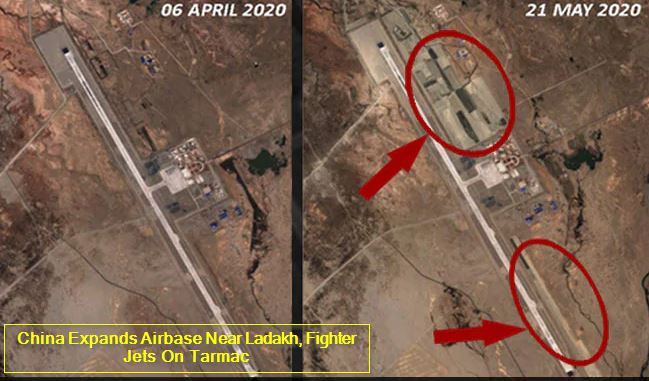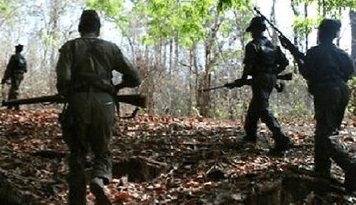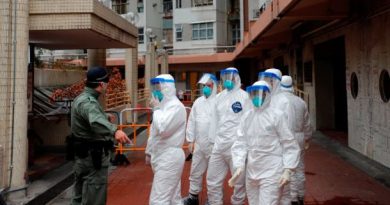Big Story : China Expands Airbase Near Ladakh, Fighter Jets On Tarmac
The images have emerged amid a standoff between Indian and Chinese forces near Ladakh, described as India worst border tension since Kargil in 1999.
New Delhi:
Satellite images show massive construction activity at a high altitude Chinese air base, located just 200 kilometres away from the Pangong Lake, the site of the skirmish between forces of India and China on May 5 and May 6.
Two images, exclusively sourced from the open source intelligence expert detresfa_ , an analyst with ShadowBreak Intl., show the Ngari Gunsa airport in Tibet. The first image is dated April 6, 2020 while the second one, dated May 21, this year, shows massive construction activity including the addition of what appears to be a second taxi-track or a secondary tarmac to position helicopters or combat aircraft. A third image shows a close-up of the main tarmac at the airport with a line-up of four fighter jets believed to be either J-11 or J-16 fighters of the Chinese People’s Liberation Army Air Force.

The second image (right) dated May 21, this year, shows massive construction activity.
The J-11/J-16 are advanced, domestically produced variants of the Russian Sukhoi 27 and broadly match the capabilities of the Indian Air Forces Sukhoi 30 MKIs, its most potent fighter until the arrival of the first batch of Dassault Rafales in a few weeks.
A caption on close-up image with the fighters indicates that their deployment at this base was first spotted in December 2019. The close up images now released help spotters identify the type of fighters deployed.
The location of the Ngari Gunsa air base is particularly significant. A dual-use military and civil airport which serves the town of Shiquanhe in the Ngari prefecture, the airport is located at 14,022 feet, which makes it among the highest in the world.
The advantage gained by its location close to the Line of Actual Control is balanced by the reality that fighter jets deployed at such an altitude can only carry limited war-loads and fuels.
[amazon box=”B07VJ92G95″ “small”]
”The useful endurance of Chinese J-11 or J-16 fighters deployed at such altitudes will not be more than an hour,” said Squadron Leader Sameer Joshi (retired), a former IAF fighter pilot and Kargil war veteran. ”The useful endurance of Indian Air Force fighters which deploy from multiple air bases in the plains could be more than three to four hours if air to air refuelling tankers are used.”

The close up images now released help spotters identify the type of fighters deployed.
In simple terms, this means that IAF fighter jets deployed in the area can fly longer than Chinese fighters deployed at the air base. On the other hand, China can deploy fighters at Ngari over parts of Ladakh which now see a faceoff between Indian and Chinese forces.
Reports indicate that several thousand Chinese soldiers have either crossed or are very close to the Line of Actual Control in Ladakh. The skirmishes which began on May 5 this year have seen vicious hand-to-hand fighting between Indian and Chinese forces on the North bank of the Pangong Lake. The biggest area of concern is thought to be the Galwan River basin further North where Chinese forces are reported to have positioned themselves to threaten a road completed last year which leads up to Daulat Beg Oldie, a crucial Indian Air Force base in Ladakh which supplies Indian soldiers in the region.
Multiple meetings have been held between local commanders from the rank of Colonel to Major General in Ladakh but there has been no breakthrough at the moment. In Delhi, the Defence Minister Rajnath Singh held meetings with the Chief of Defence Staff and the Armed Forces Chief.
Yesterday, the Chinese Embassy in New Delhi offered to repatriate Chinese nationals in India if they wished, though flight tickets would need to be borne by Chinese nationals who wished to avail of the services. The standoff between Indian and Chinese forces has been described as India worst border tension since Kargil in 1999.




